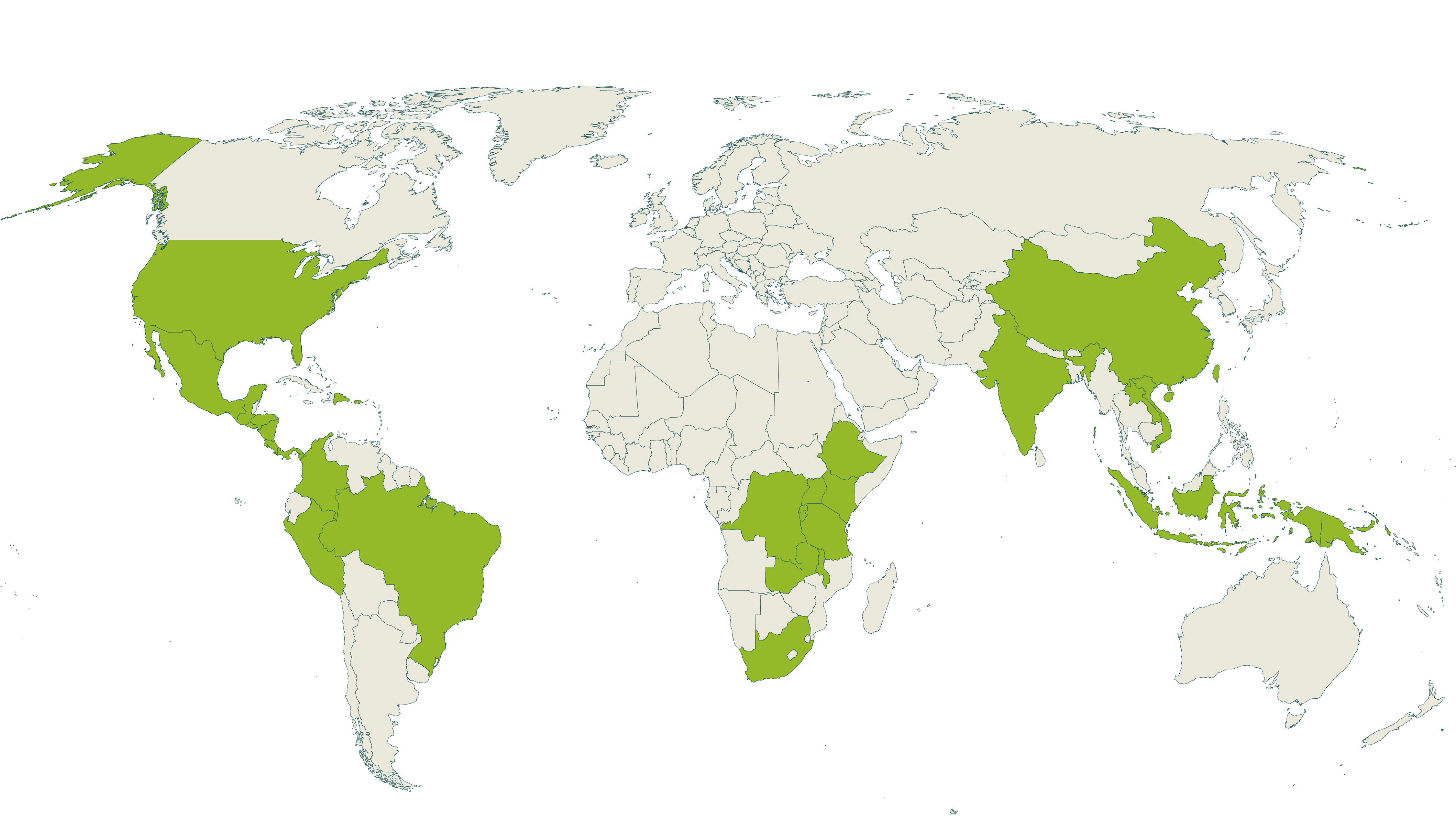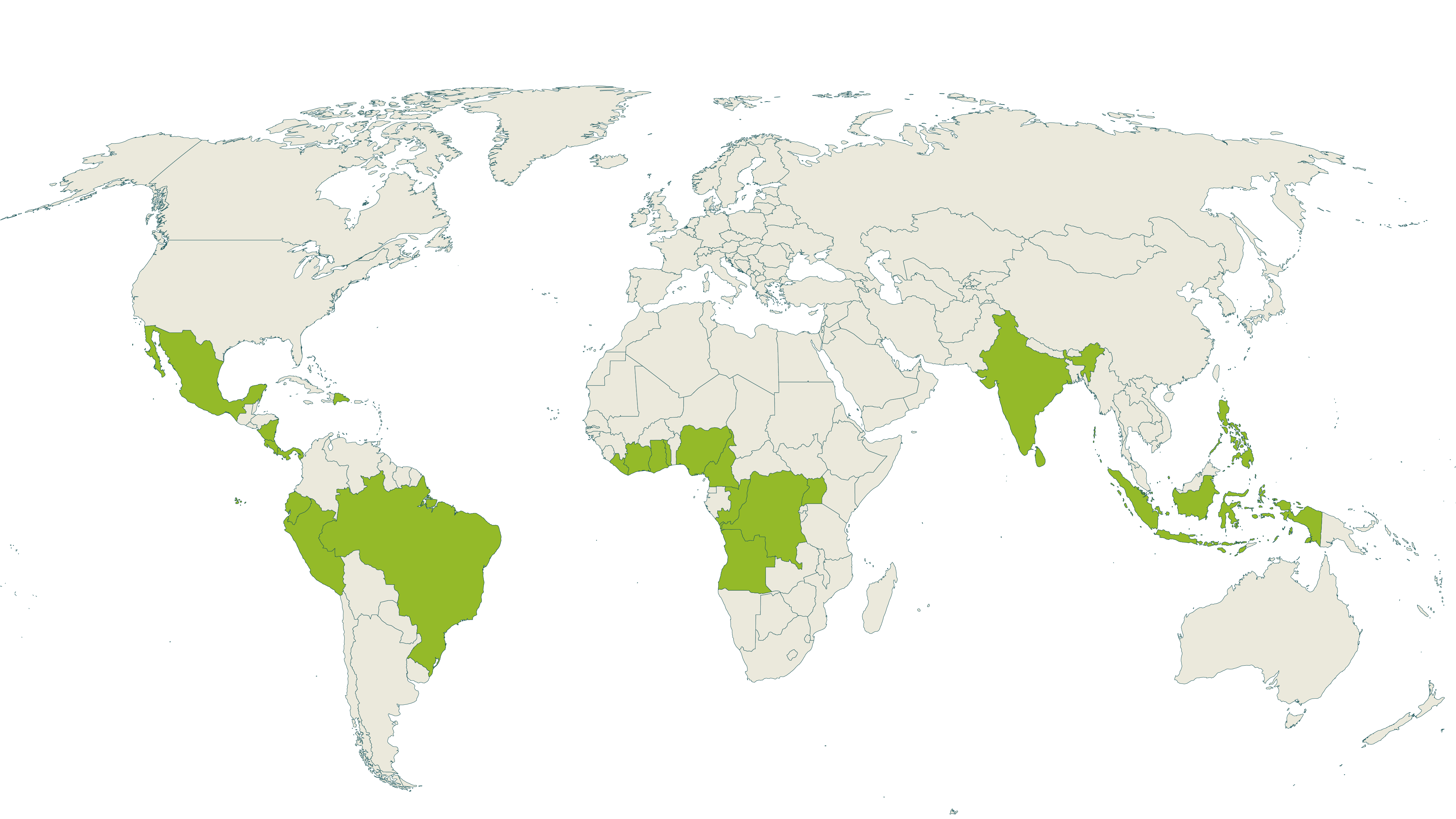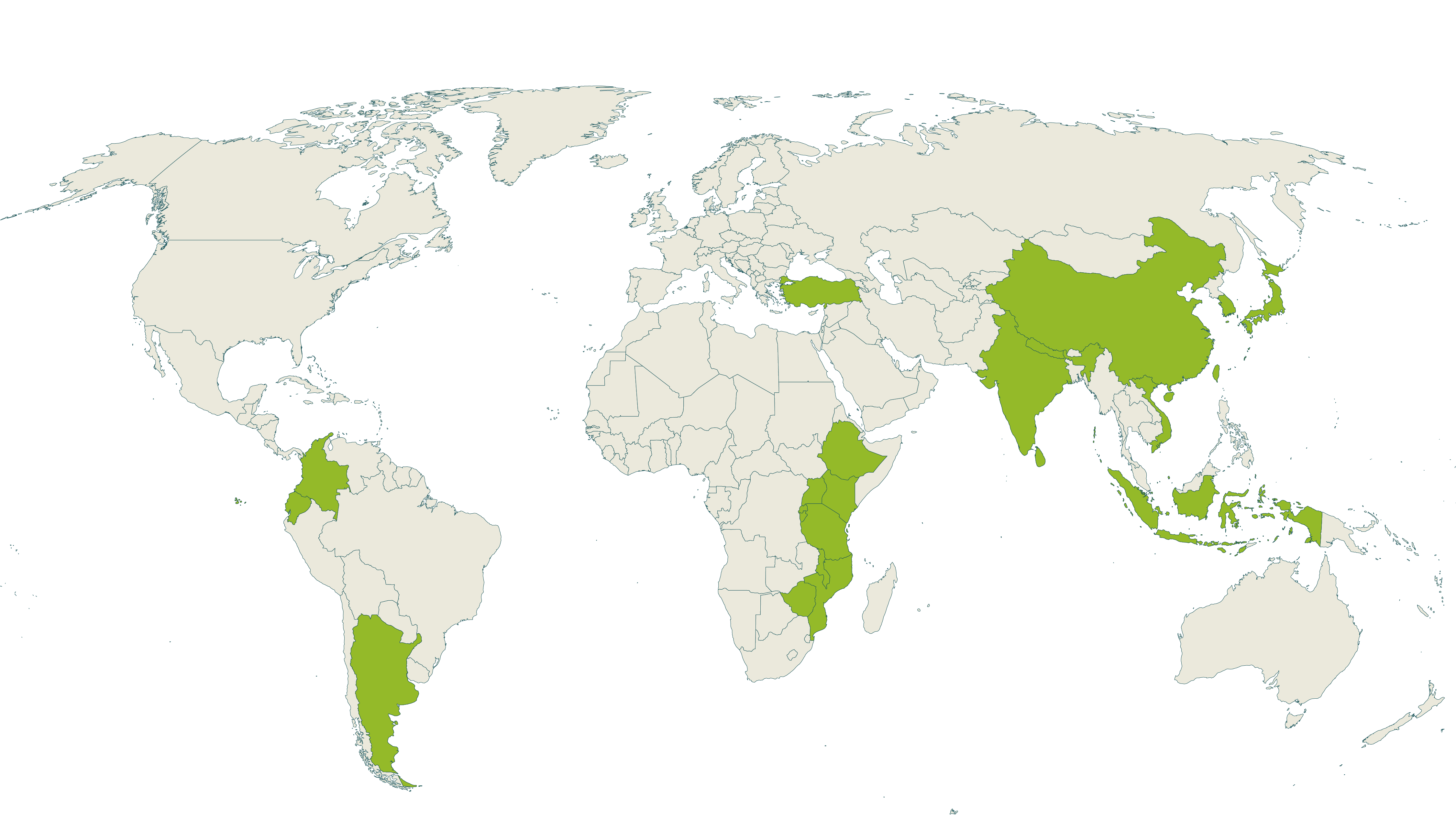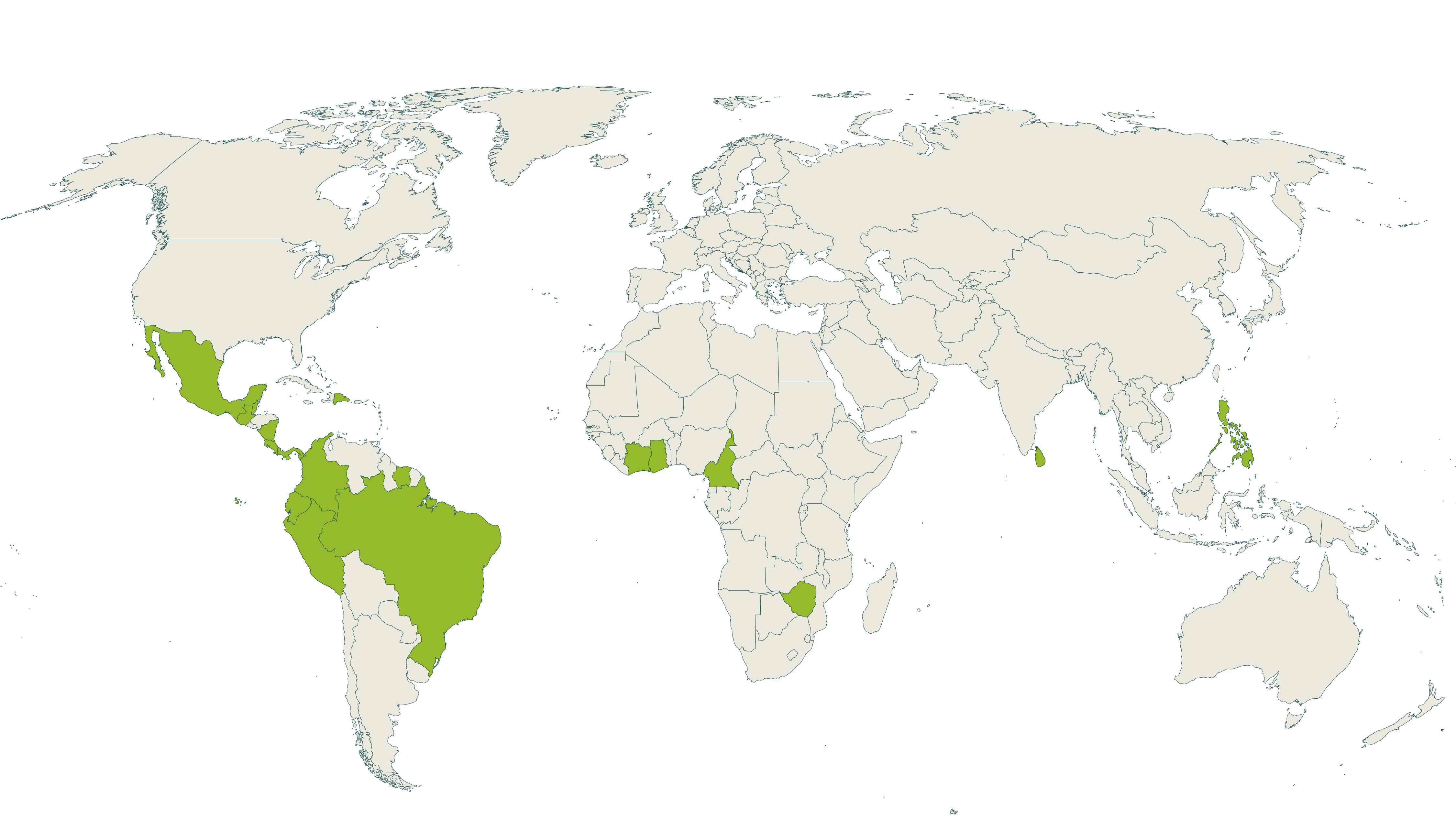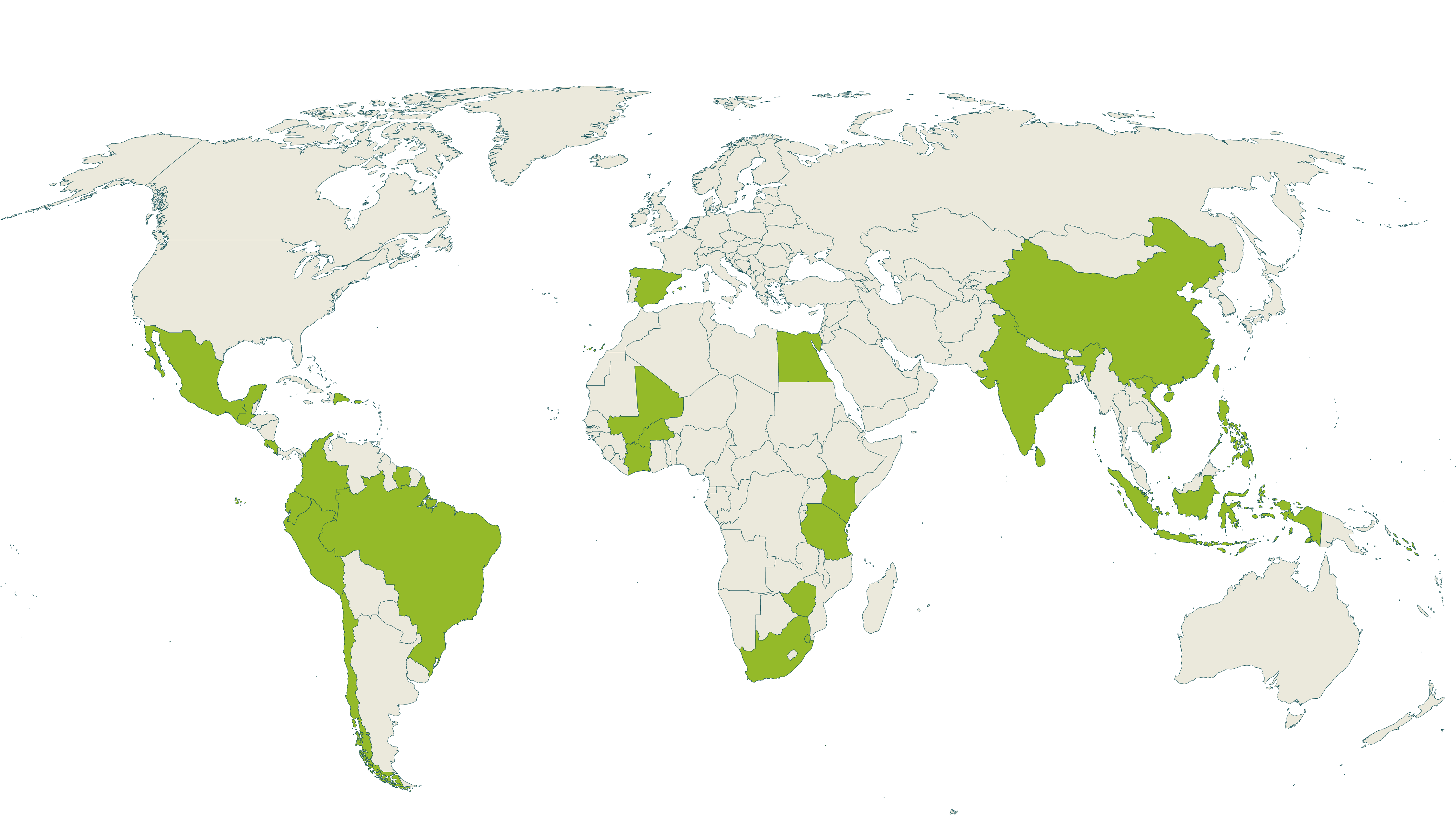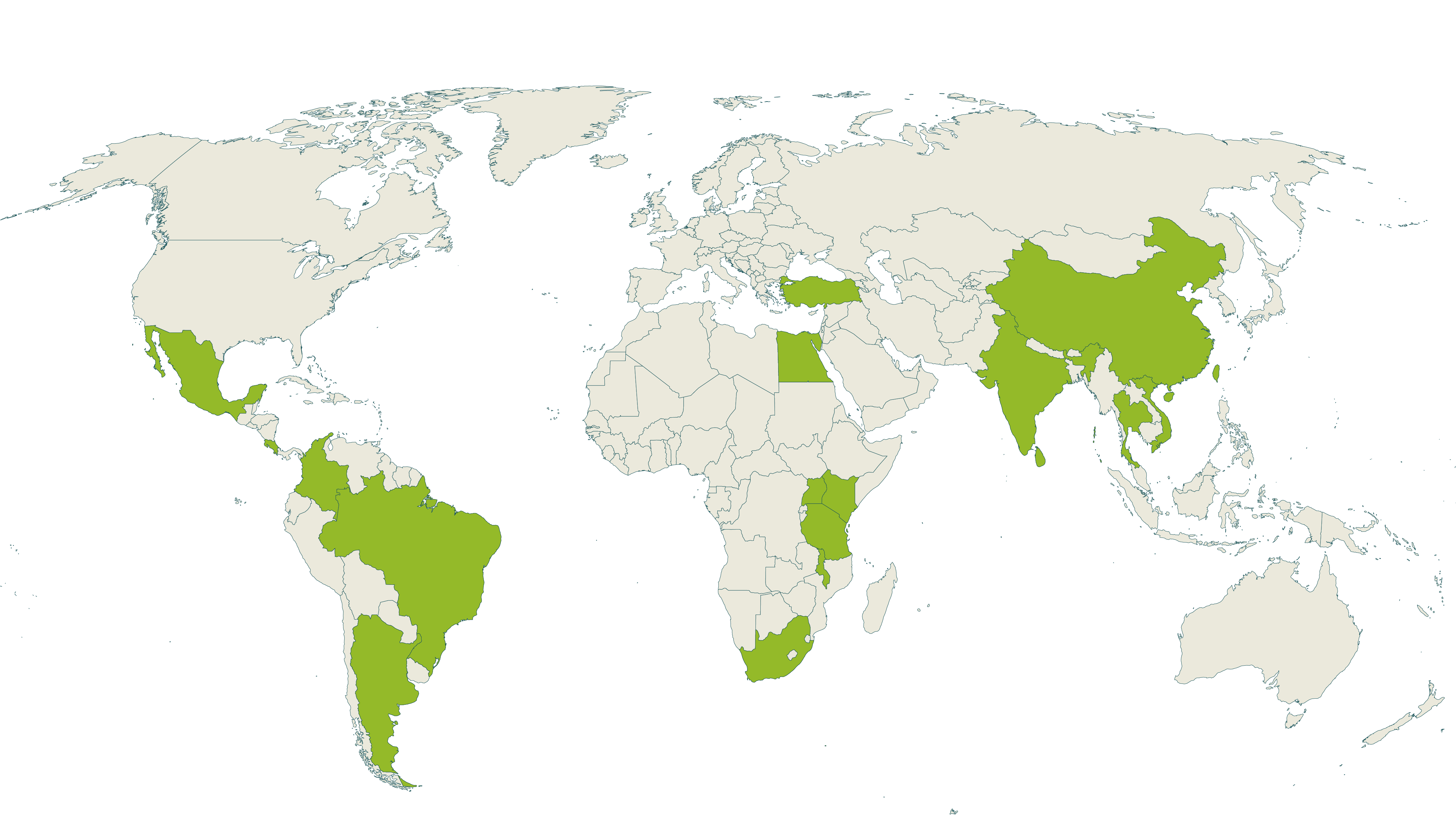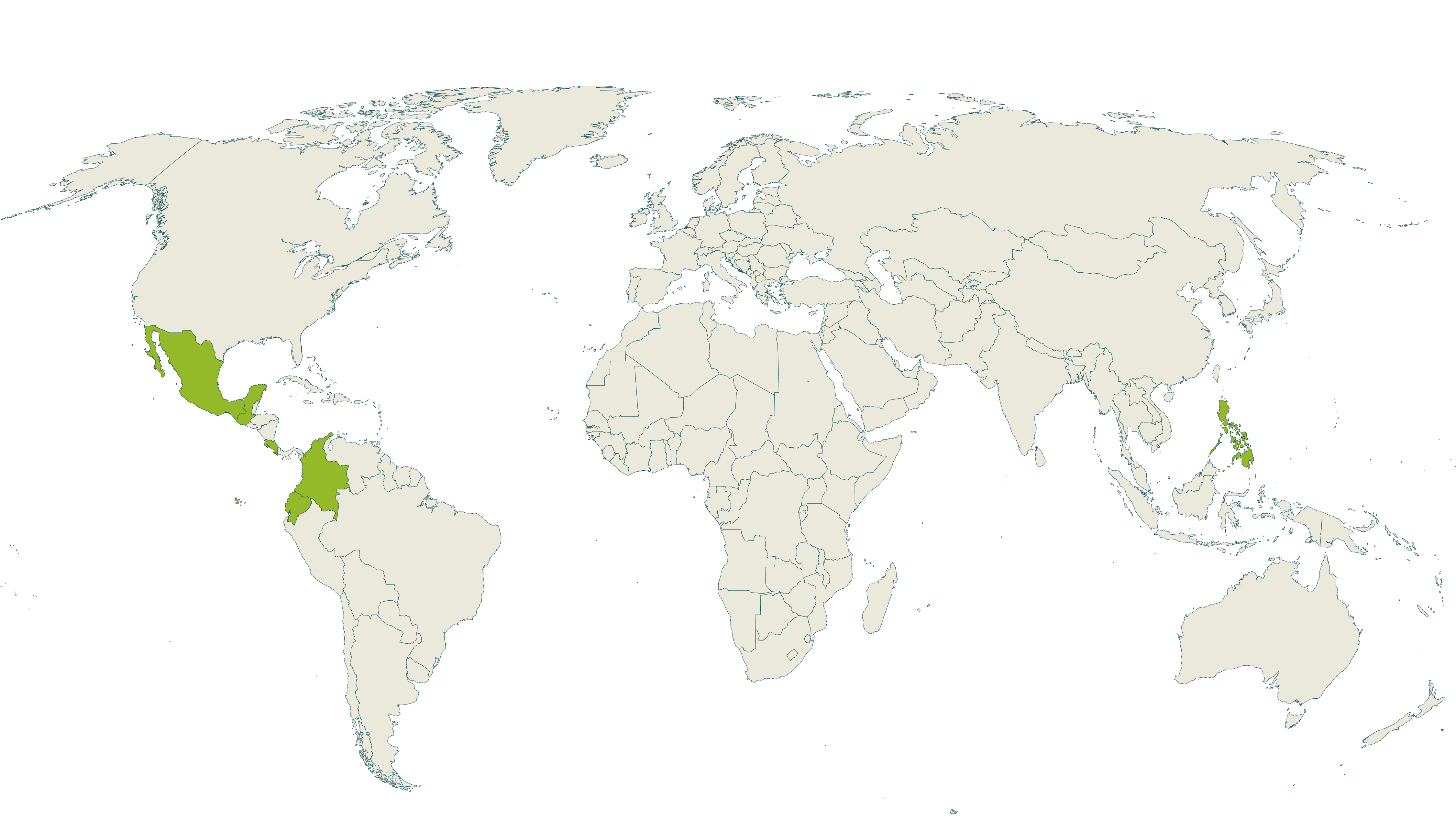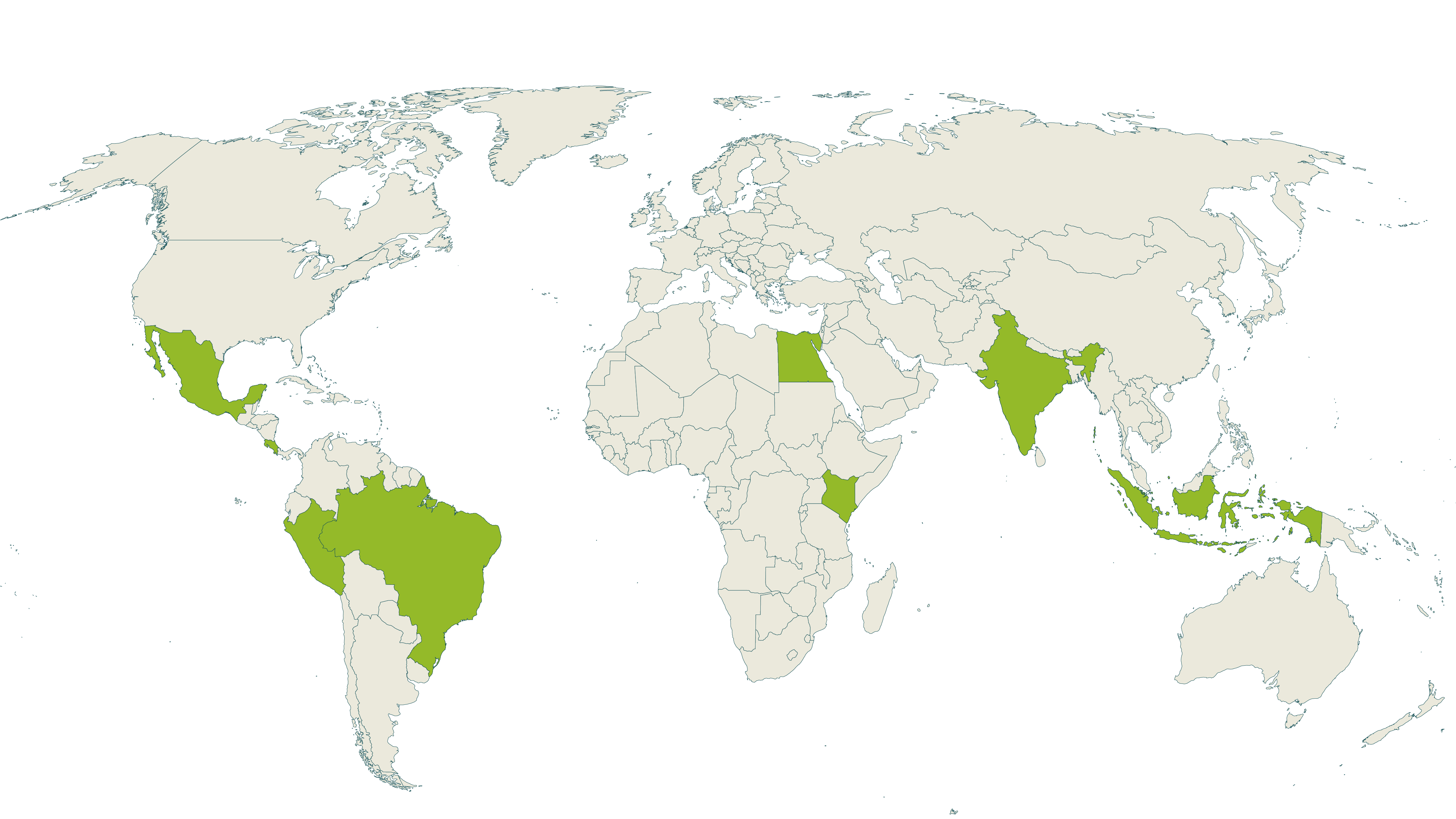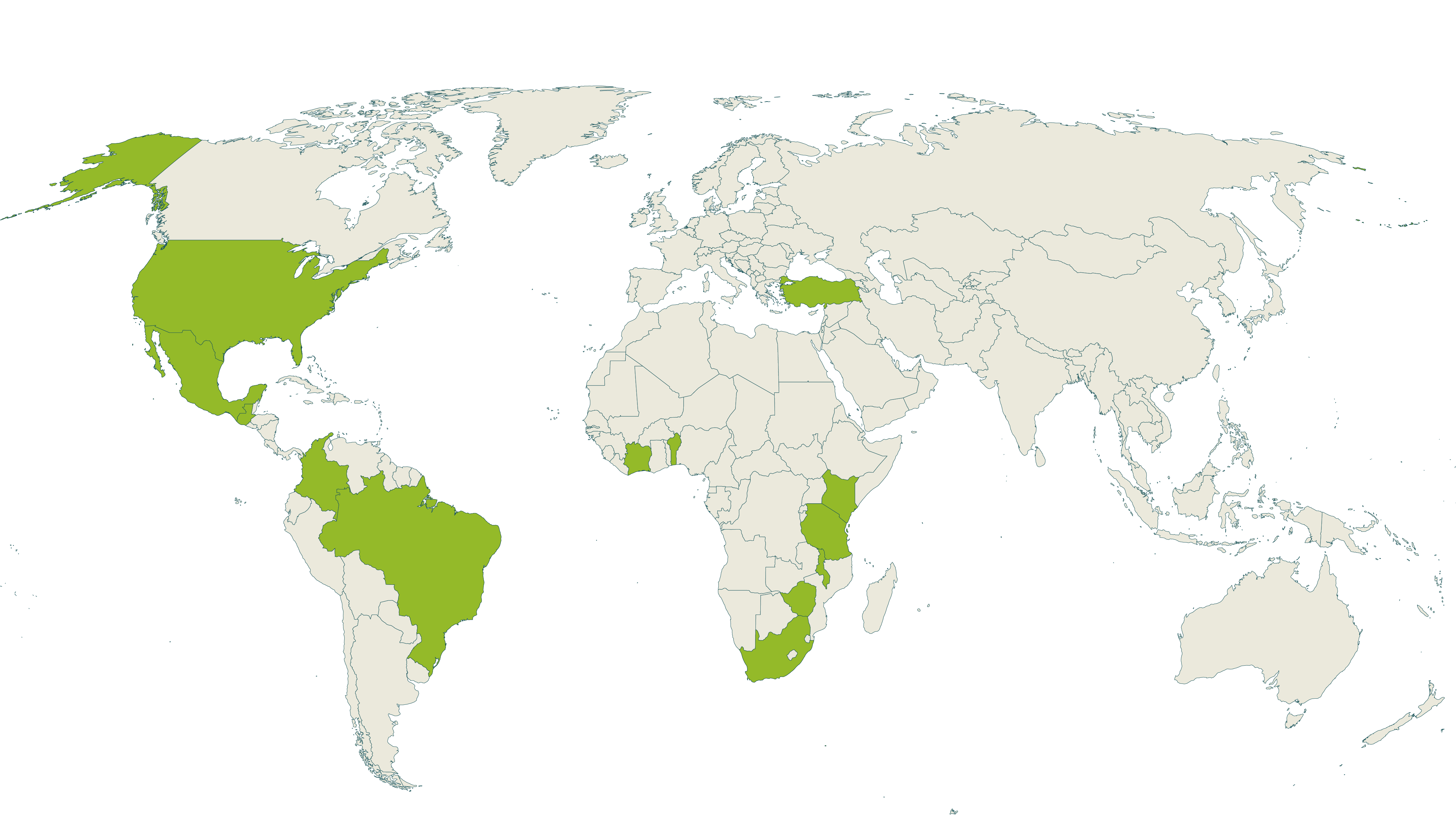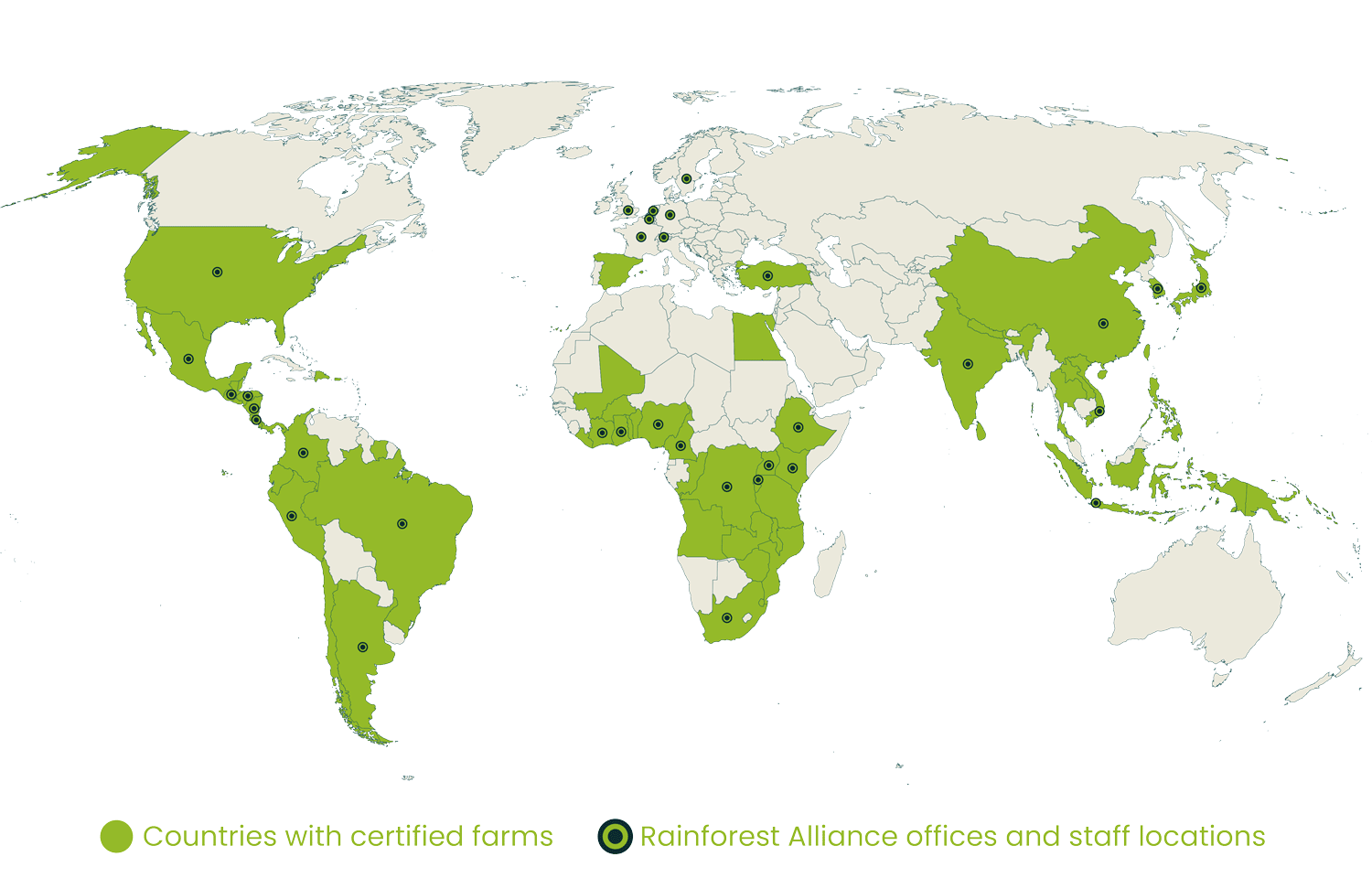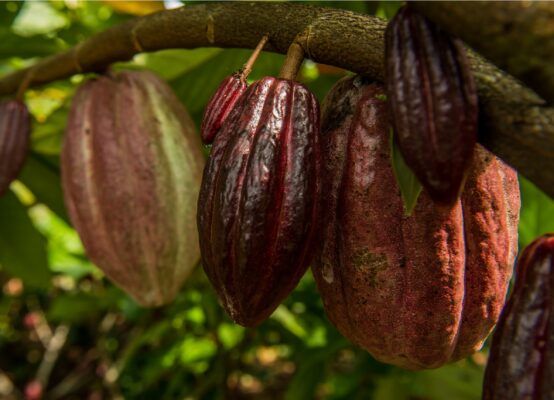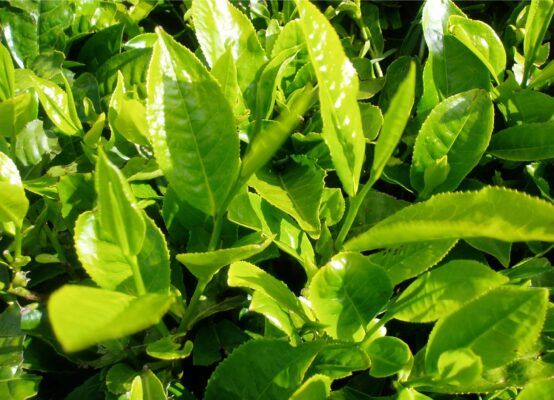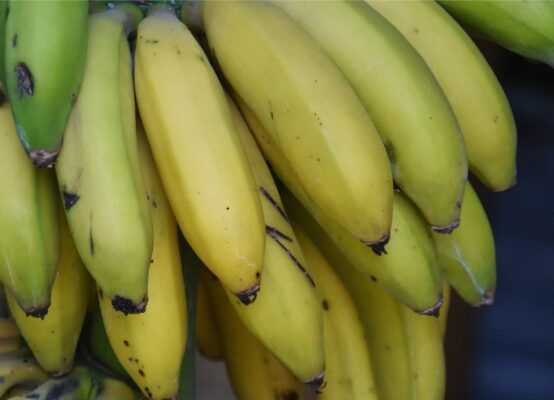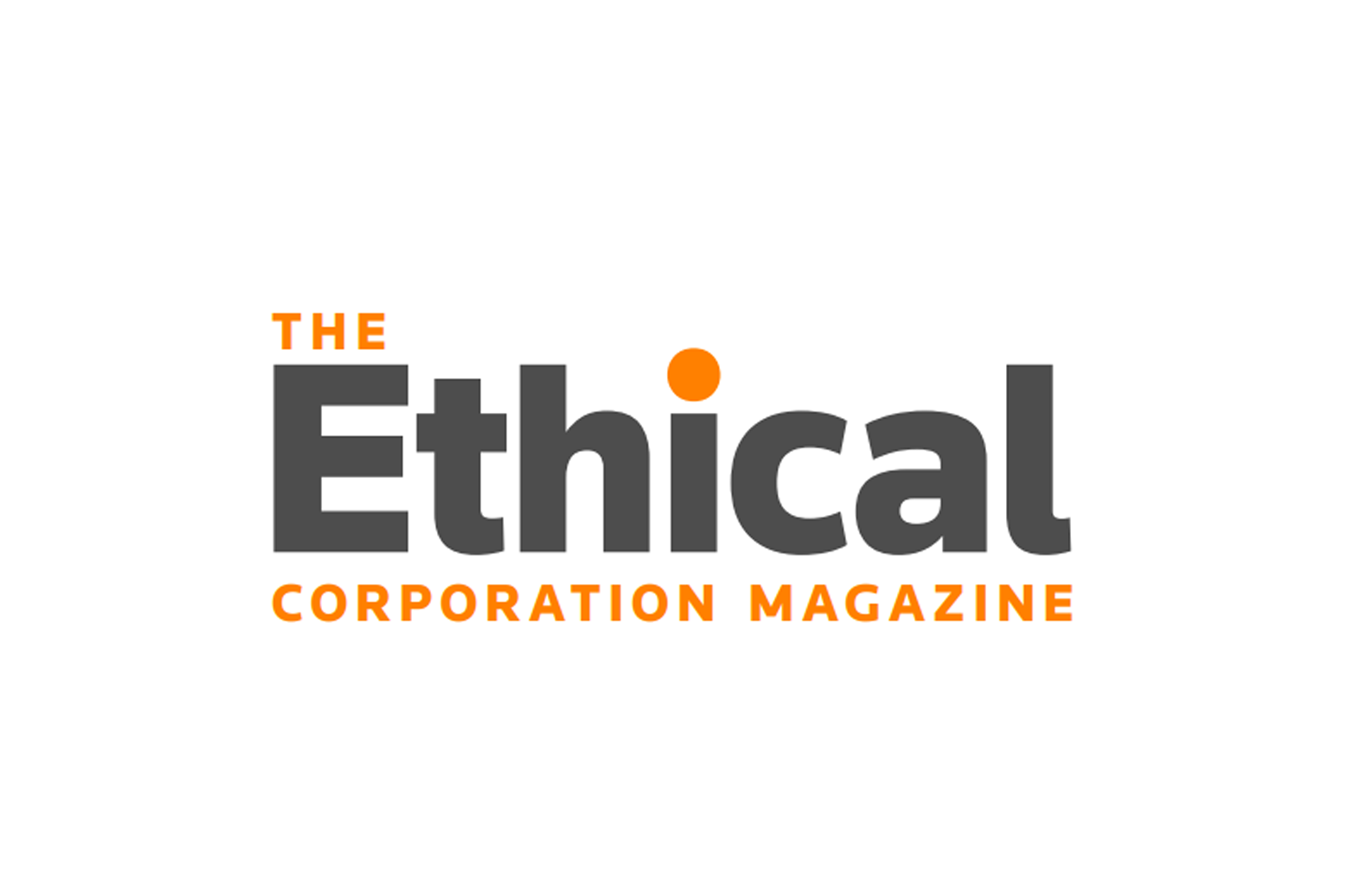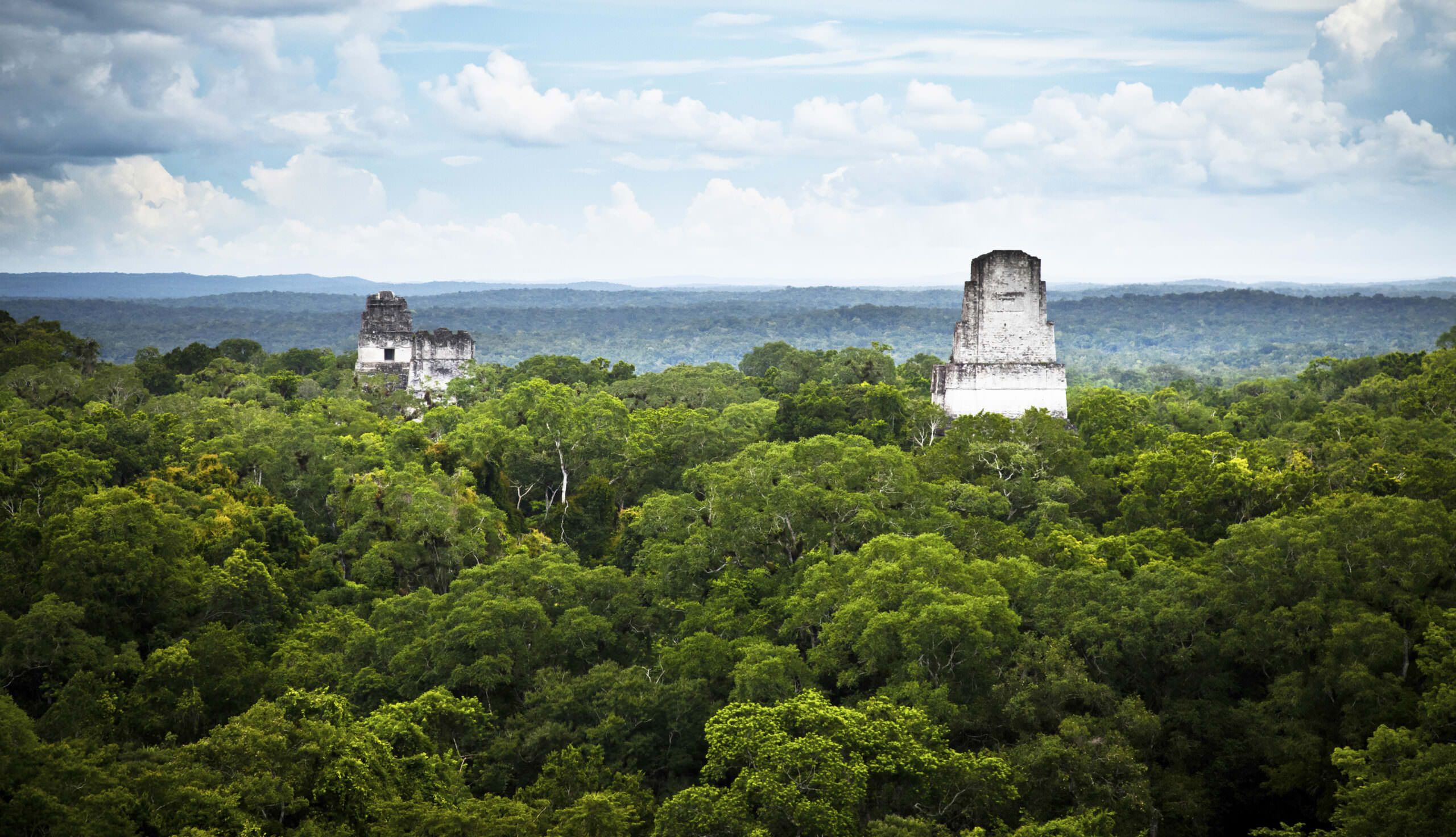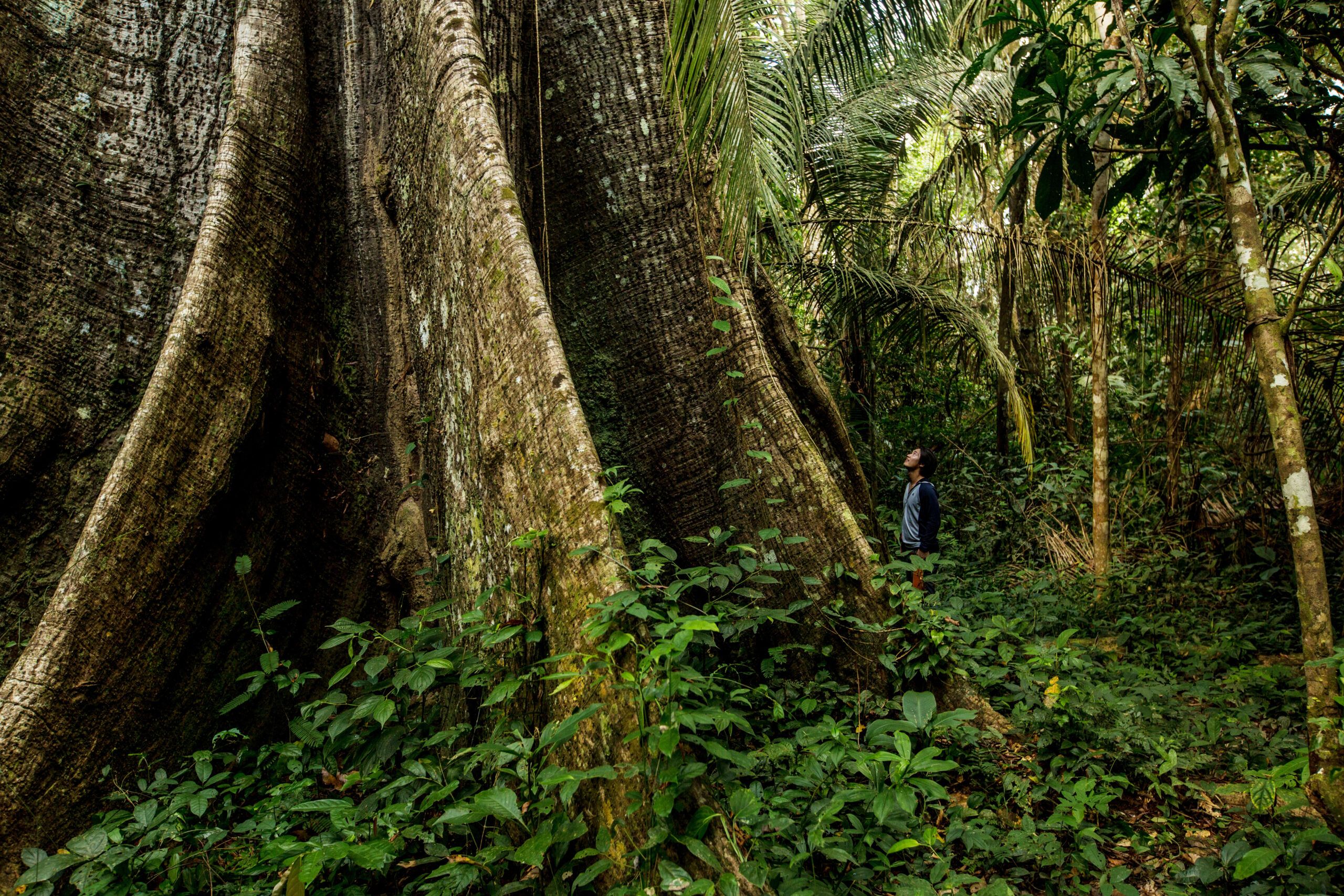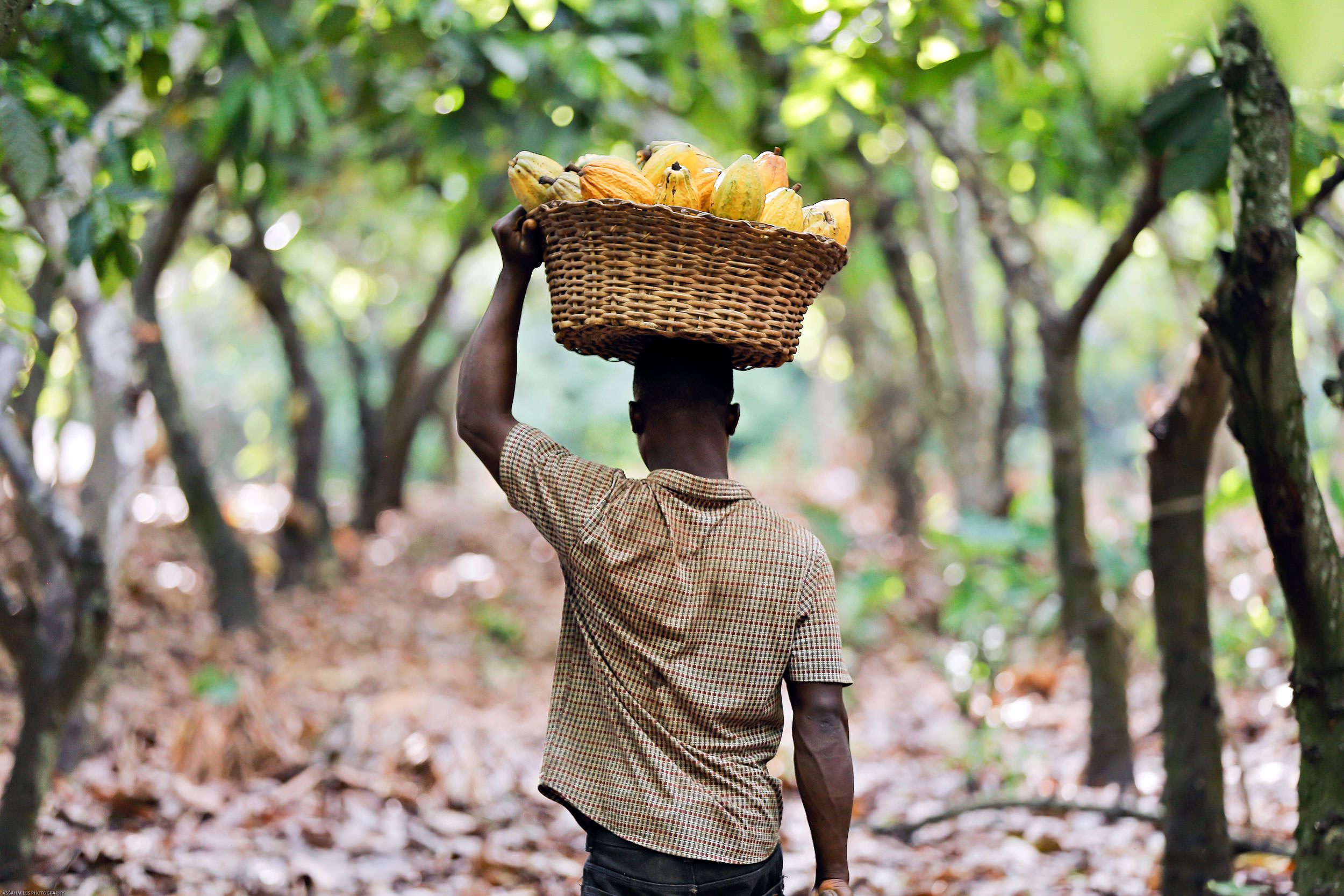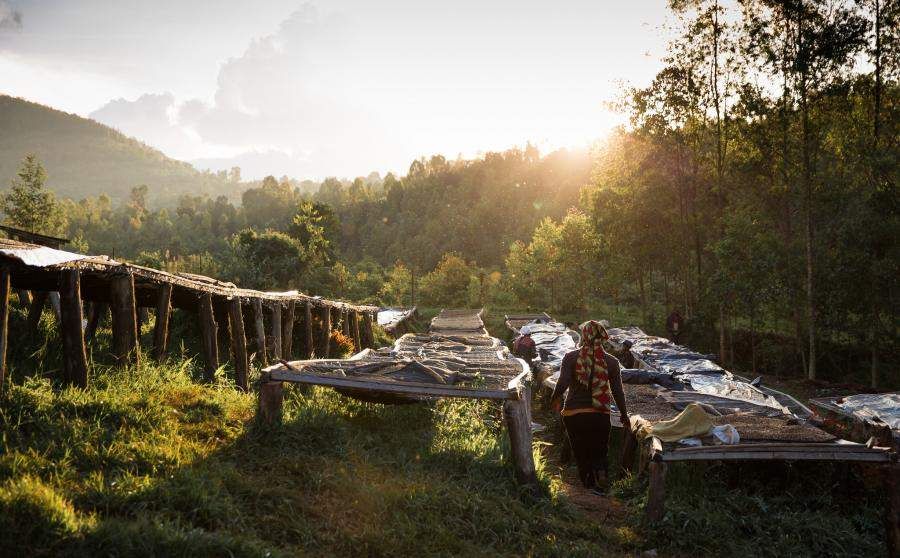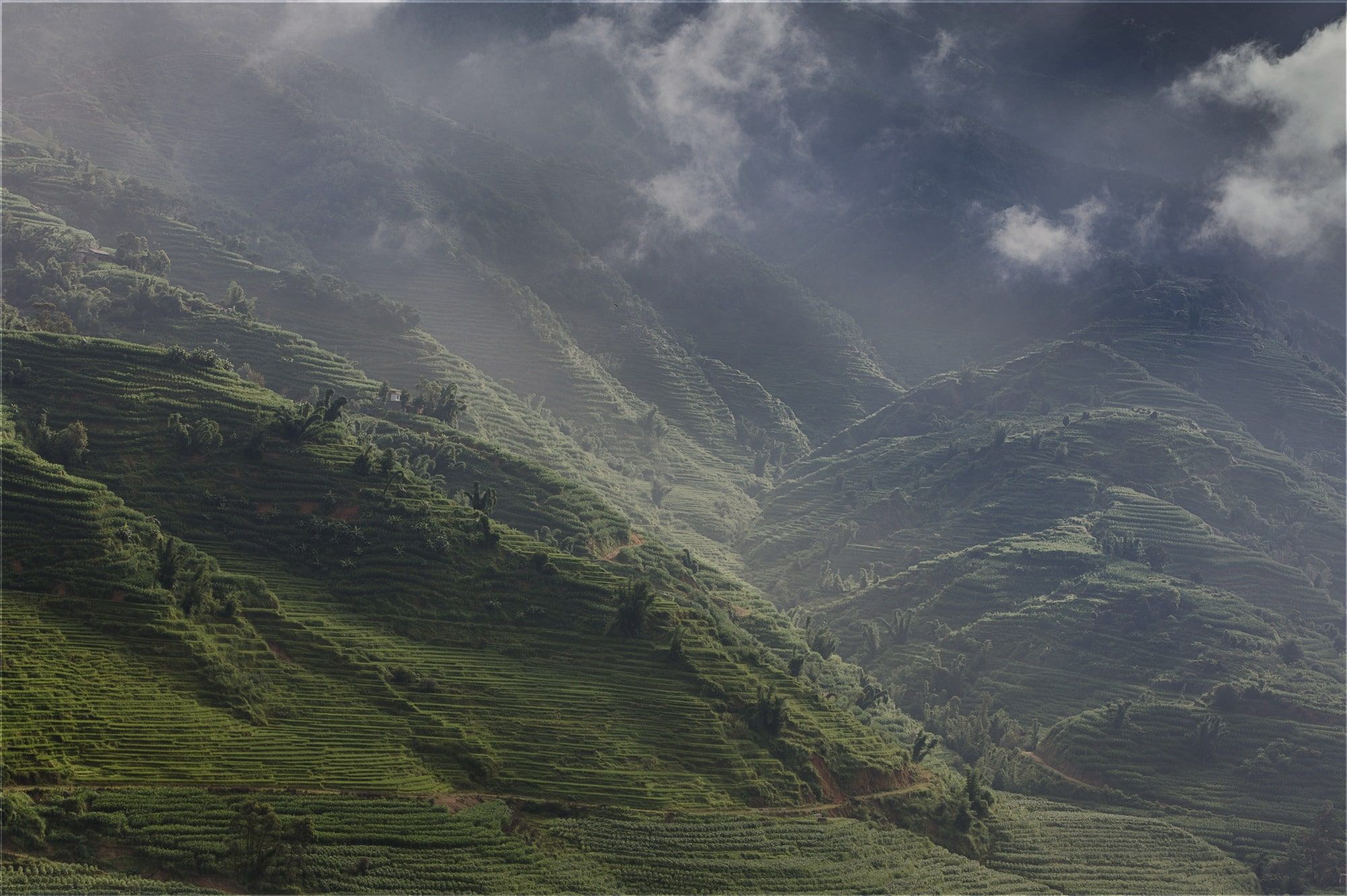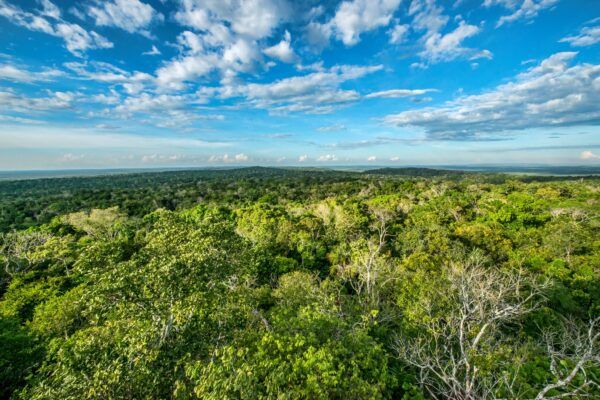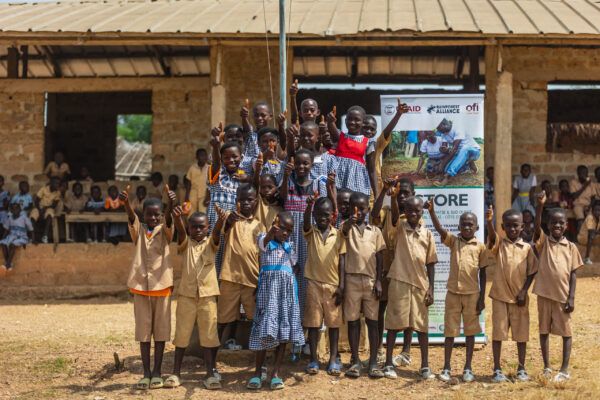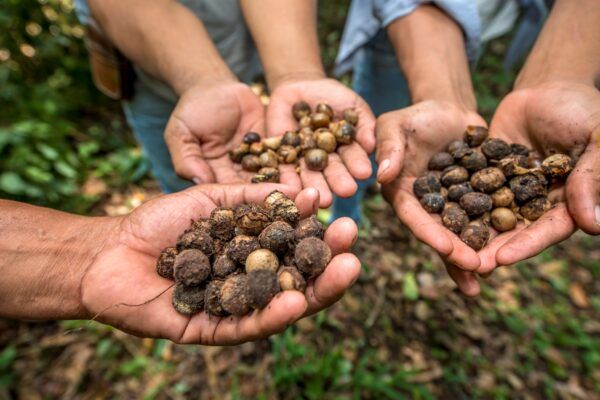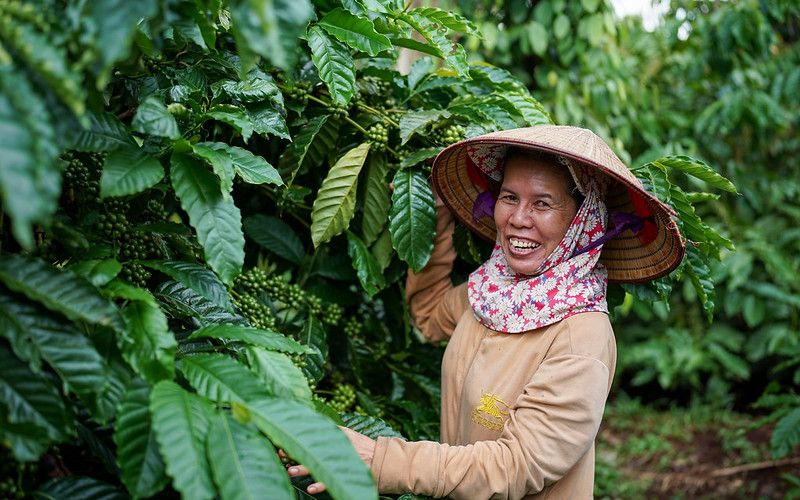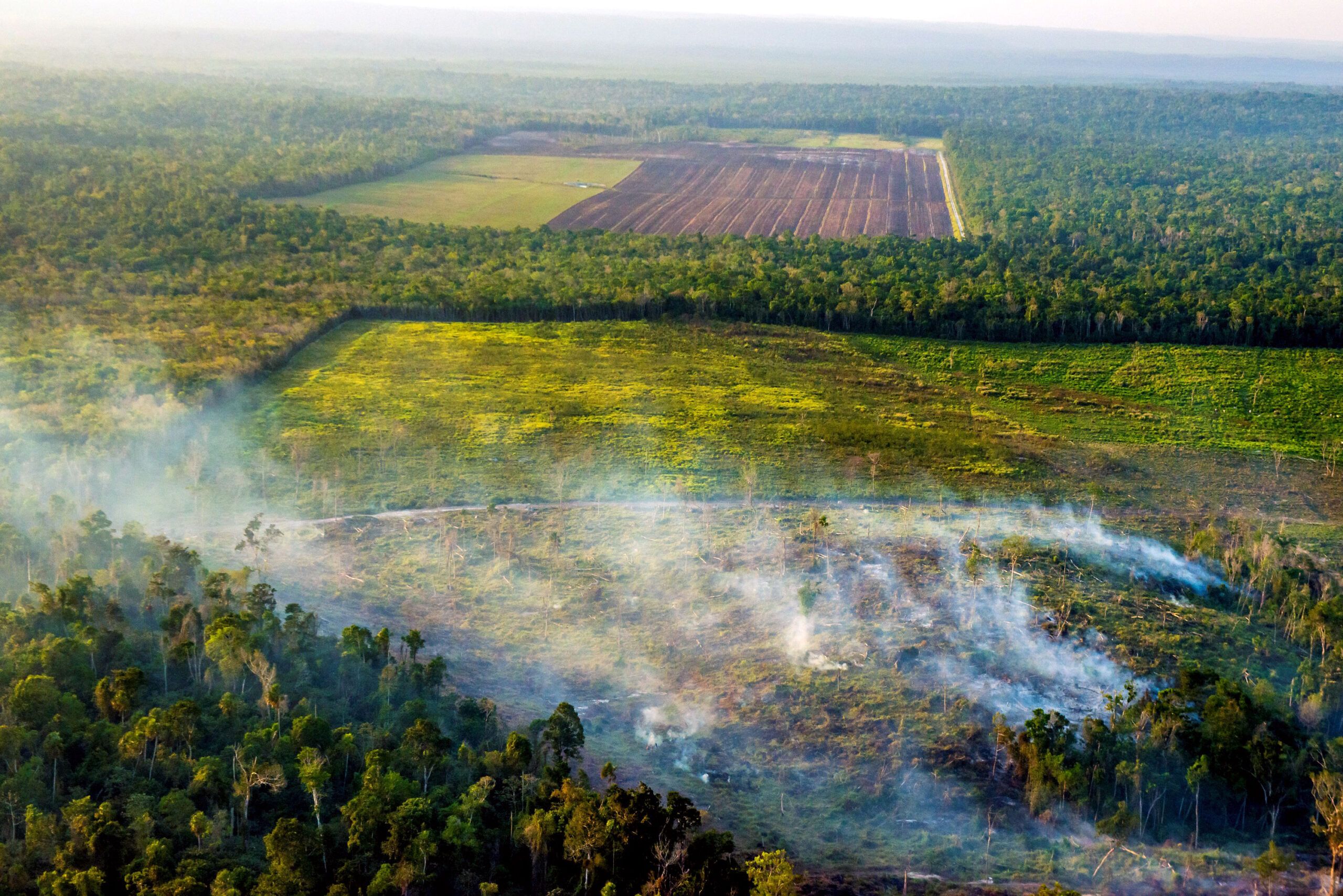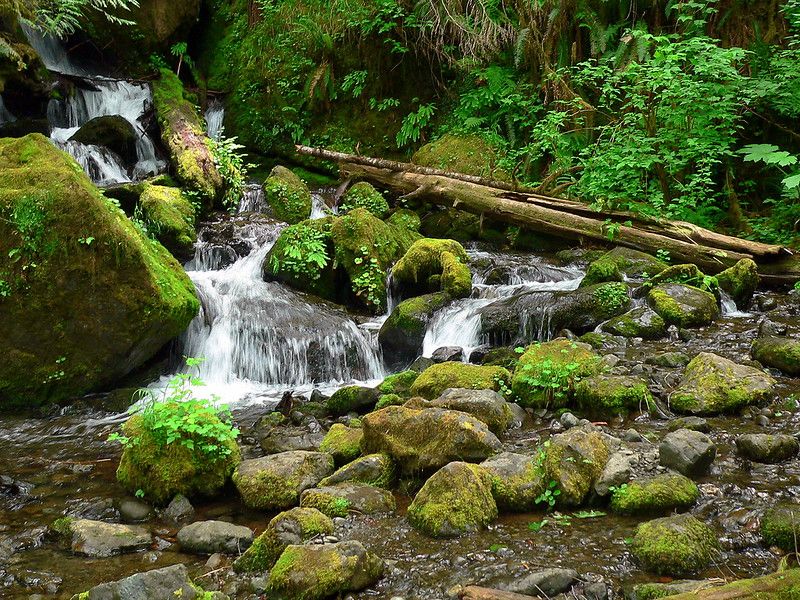A Message from our CEO
If you’re reading this, chances are you already understand the stakes: Tropical forests are still falling at an alarming rate—18 football fields a minute—and the climate crisis is accelerating, pushing our world toward a dangerous tipping point and driving unprecedented biodiversity loss. Meanwhile, many farming and forest communities still struggle daily to meet basic needs.
At the Rainforest Alliance, we have been working to stop the destruction of our rainforests and improve the lives of the millions of people who depend on them for nearly four decades. These forests are not only home to extraordinary biodiversity—they also serve as vital carbon stores, help regulate the global climate, support freshwater systems, and play a key role in maintaining the countless natural processes that keep our planet livable. Their protection is critical not only for the Earth’s stability, but also for the communities whose livelihoods are closely tied to them.
Over the years, we’ve built an alliance of farmers, forest communities, companies, and everyday people who are committed to protecting these critical ecosystems that are at the heart of our mission. Today, the Rainforest Alliance is recognized globally as a leader in community forestry and one of the world’s largest farm-to-consumer certification programs—spanning more than 7.9 million farmers and workers across more than 6 million hectares of certified farmland. While we have achieved a great deal, there is still much work to be done—and if one thing’s for sure, it’s that the future can’t wait.
Now is the time to transition to a new model of agriculture—one where every cup of coffee and every bar of chocolate gives back more than it takes from the land and the people who care for it. There are approximately 600 million smallholder farmers globally, growing about a third of the world’s food—with the vast majority living in poverty. Yet only a fraction are currently working to improve their farming practices through our certification and landscape programs. To achieve a tipping point for system change, we need to accelerate the speed and scale of impact. Our goal is to reach 100 million farmers and workers by 2030, helping them adopt regenerative practices that actively restore ecosystems, build climate resilience, and allow communities to thrive. At the heart of this shift are the farmers themselves, whose leadership, knowledge, and deep connection to the land are the engine of change and must be supported, fairly recognized and rewarded.
In 2024, I saw firsthand what this regenerative future can look like. On a visit to Klasik Beans, a Rainforest Alliance coffee partner in West Java, Indonesia, farming cooperative co-founder Eko Purnomowidi showed me how he collects traditional knowledge from local people and listens carefully to the soil itself. His attentiveness to detail, coupled with training in better farming practices, has made him a leading expert in regenerative agriculture. This expertise has enabled him and his neighbors to transform a completely deforested area into thriving coffee farms that support biodiversity while providing a good livelihood in return.
Beyond certification, we’re also driving wide-scale transformation in farming and forestry across entire landscapes. From the Amazon to Indonesia, our 83 active landscape and community programs—covering 25+ million hectares and five critical regions—are bringing together companies, governments, and local NGOs to tackle the kind of complex and interconnected challenges that no one can solve alone. The secret to our success? Ensuring that our landscapes programs amplify the voices of those who call these extraordinary places home. That’s why the Rainforest Alliance takes a “boots on the ground” approach; more than 60 percent of our expert staff are based in these key landscapes or in the wider region, working side-by-side with rural communities to design and implement inspiring initiatives to overcome systemic challenges in farming and forestry.
In 2024, we also leaned into our ethos of continuous improvement to lay the groundwork for an exciting new wave of solutions—both within and beyond certification—that aim to deliver even greater benefits for farmers, communities, and businesses alike. The first of those solutions is the Rainforest Alliance Sustainable Agriculture Standard version 1.4. Coming into effect in October 2025, the updated standard features streamlined requirements and strengthened data quality. Alongside this, we will also be introducing our new Regenerative Agriculture Standard as the first of three specialized certification solutions to be released in 2025 and 2026.
We’re growing our movement with urgency and purpose, because the future won’t wait—and neither will we.

Santiago Gowland
Rainforest Alliance CEO
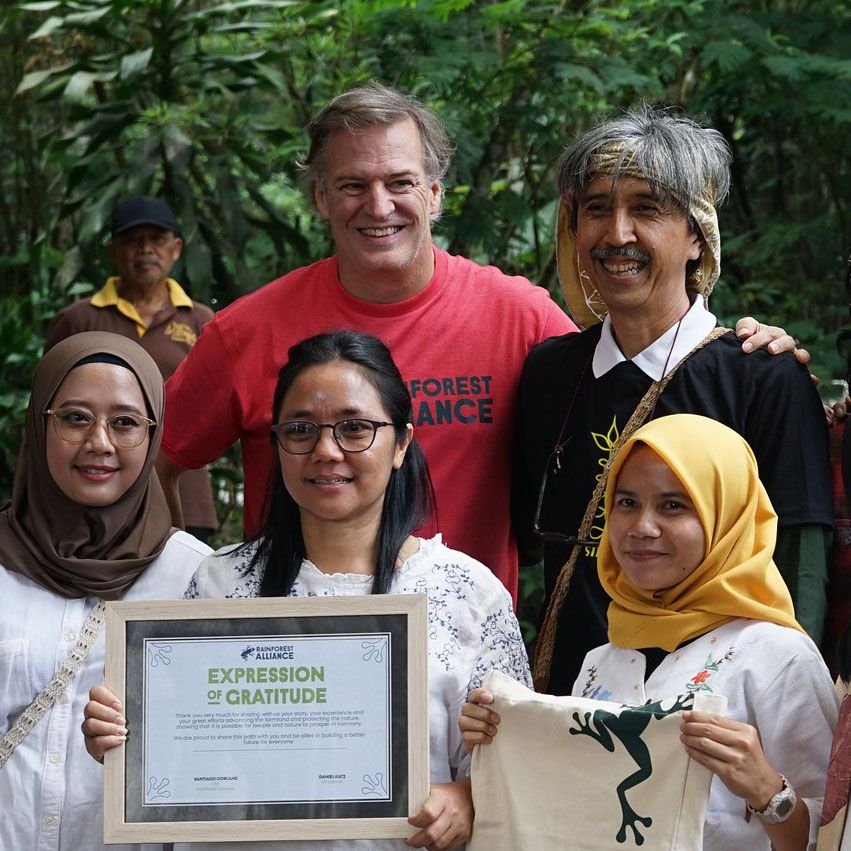
Our Global Reach
A Future of Farming That Works for All
From a banana farm in Costa Rica to one of the world’s largest farm-to-consumer certification programs, we’re transforming the way the world approaches agriculture—one farmer and community at a time.
Certification is a powerful win-win for farmers and companies alike. For the mostly small-scale growers we work with, it offers practical support—from training in sustainability practices to providing better market access and pathways to boost their incomes.
For companies, certification offers the credible, independent assurance they need to stay on top of supply chain risks, meet regulatory commitments, and build trust with consumers.
Our vision? Regenerated landscapes and thriving communities.
7.9 million
farmers and workers on certified farms
6+ million
hectares of certified farmland
7,855
company partners
62
countries with certified farms and programs
Small Scale, Big Impact
A smallholder farmer is one who cultivates less than 10 hectares of land, according to internationally accepted definitions. They often face significant climate and economic challenges and rely on farming as the main source of family income. Smallholders commonly group together to pursue certification as a collective.
99%
of certified farms are run by smallholder farmers
3.1 Million
smallholder farms
2.31 Hectares
Average smallholder farm size
Certified at the Source, Recognized on the Shelf
155 countries
where you can buy products with the Rainforest Alliance Certified seal
40K+
products with the Rainforest Alliance Certified seal
Companies buy enough Rainforest Alliance Certified coffee to make:
333 Million Cups
of coffee each day
Companies buy enough Rainforest Alliance Certified cocoa to make:
96 Million Bars
of chocolate each day
Power in Partnership: Impact Felt Across Landscapes
Creating a world where people and nature thrive in harmony takes more than isolated efforts—it requires a big-picture approach. That’s why we go beyond certification and individual farms to drive change across entire landscapes, spanning tens of thousands to millions of hectares.
These figures from our landscape and community programs show what’s possible when farmers, forest enterprises, local leaders, companies, and governments join forces to tackle complex and often interconnected challenges.
1.3 million
people directly benefitting
25+ million
hectares covered
US$33.5 million
sales revenue generated by small-and-medium-sized farming and forestry businesses
US$394 million
invested since 2003
Building Momentum, One Leap at a Time
Our green frog seal has come to represent a global movement of millions of consumers who make better choices every day for people and planet. Because those small supermarket decisions? They really do add up—to more companies motivated to do the right thing, more land protected, and better lives for farmers around the world.
814K+
new members of our alliance (email and social media followers)
1.9 million
social media followers (43% growth in global Instagram followers)
3.5 billion
social media impressions
18.6 million
social media engagements (18x growth)
26.8K
media mentions
99%
of media mentions were positive or neutral
Staff Statistics
694 Total Staff
in 35 countries across 5 continents
Men: 306 (44%) Women: 341 (49%) Undisclosed: 47 (7%)
Leadership team & Directors: 48
Men: 22 (46%) Women: 26 (54%)
USA: 91
M: 25% W: 75%
Europe: 180
M: 39% W: 54% U: 7%
Asia-pacific: 76
M: 50% W: 45% U: 5%
Latin America: 189
M: 47% W: 48% U: 5%
Africa: 158
M: 60% W: 32% U: 8%
Certification & Beyond
The Next Evolution of Rainforest Alliance Certification
2024 was a pivotal year for the Rainforest Alliance—a time of reflection, rigorous analysis, and bold thinking. Leaning into the innovation that has always been at the heart of our organization, we laid the groundwork for exciting new solutions—launching in 2025 and 2026—to drive even greater impact for farmers, communities, and companies.
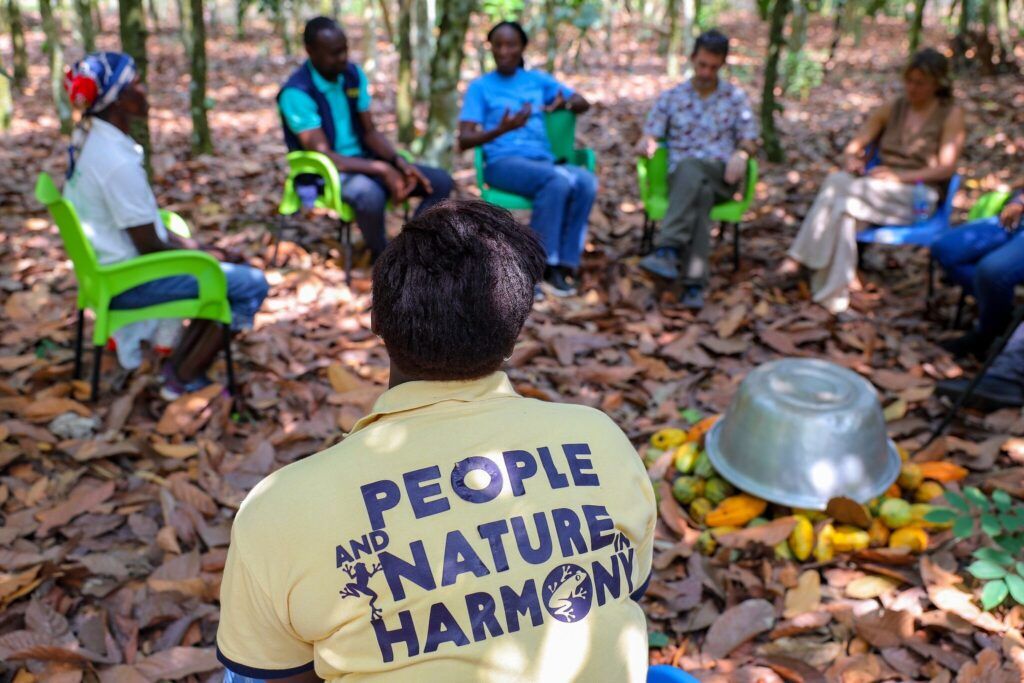
The Rainforest Alliance Sustainable Agriculture Standard version 1.4
In 2024, we listened extensively to feedback from farmers and companies and conducted a thorough review of our certification requirements. The result of those efforts is Version 1.4 of our Sustainable Agriculture Standard—coming into effect in October 2025. Building on what works, the updated standard features streamlined certification requirements, more focused inspections and audits, and strengthened data quality to make certification even more effective.
New specialized certification solutions
In 2024, we kickstarted development of specialized certification solutions, and their accompanying seals, for three critical impact areas: regenerative agriculture, climate, and livelihoods. While the Sustainable Agriculture Standard will remain our most holistic seal, these specialist seals will recognize farmers who go above and beyond in targeted impact areas of their choosing. This will enable farmers to access new markets and build partnerships with companies looking to deepen their ESG commitments.
A Trusted Partner in a Rapidly Changing Regulatory Landscape
As the world grapples with urgent ecological and social crises, we are heartened by a wave of new due diligence legislation. From the European Union Deforestation Regulation (EUDR) to the EU Empowering Consumers Directive, the Rainforest Alliance is closely attuned to evolving reporting needs and helping companies keep pace.
Supporting companies to make the leap towards EUDR compliance
In 2024, we optimized our robust certification and due diligence tools to help both certified and non-certified coffee and cocoa companies prepare to meet EUDR requirements ahead of the December 2025 deadline. For certified partners, these tools are offered for free as part of certification.
Building our new Sourcing Risk Assessment solution
With growing calls for supply chain transparency, we began developing our Sourcing Risk Assessment (launching in 2025)—a comprehensive service that will provide companies with reliable data and actionable insights to identify and address farm-level risks in their supply chains.
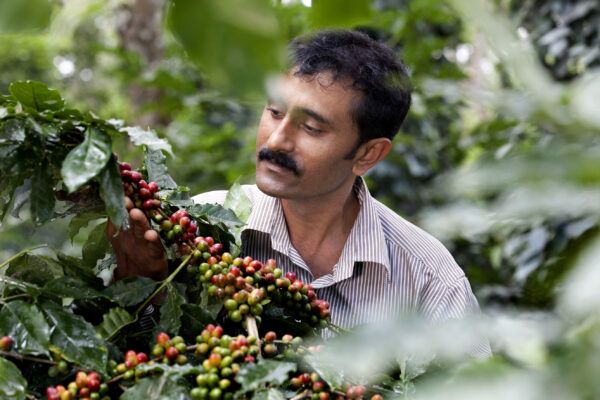
India
In May, Europe received its first shipment of EUDR-ready coffee verified by the Rainforest Alliance, grown by High Range Coffee Curing in India.
Mount Kenya’s Coffee and Tea Farmers Find Transformation Through Regeneration
The future of farming is regenerative—and for an exciting glimpse into that future, look no further than the slopes of Mount Kenya.
Launched in 2020, our Mount Kenya Sustainable Landscape and Livelihoods program supports certified coffee and tea farming communities to adopt regenerative agriculture practices that heal the land and uplift communities.
A game-changer for people and the planet
Tea farmer Enos Muriuki has seen a remarkable boost in production since joining the program. He credits this progress to several key changes: reducing his use of chemical fertilizers and pesticides, restoring soil health, and switching from older, disease-prone tea varieties to newer, drought-resistant ones.
For coffee farmer Christine Karimi, the program equipped her with essential skills, such as how to build bench terraces to combat soil erosion, use cover crops for moisture conservation, and manage her canopy for optimal fruit production. With her farm healthier and more profitable than ever, she is now passionate about passing on her knowledge to fellow farmers.
34,254
certified coffee and tea farmers in Mount Kenya transitioned to regenerative agriculture practices in 2024
106,300
trees planted
106+
hectares of degraded land restored
202
jobs created (64% of which are women and youth)
“As a Rainforest Alliance Certified farmer, producing good quality coffee has helped me secure premium prices at auction.”
Christine Karimi, coffee farmer
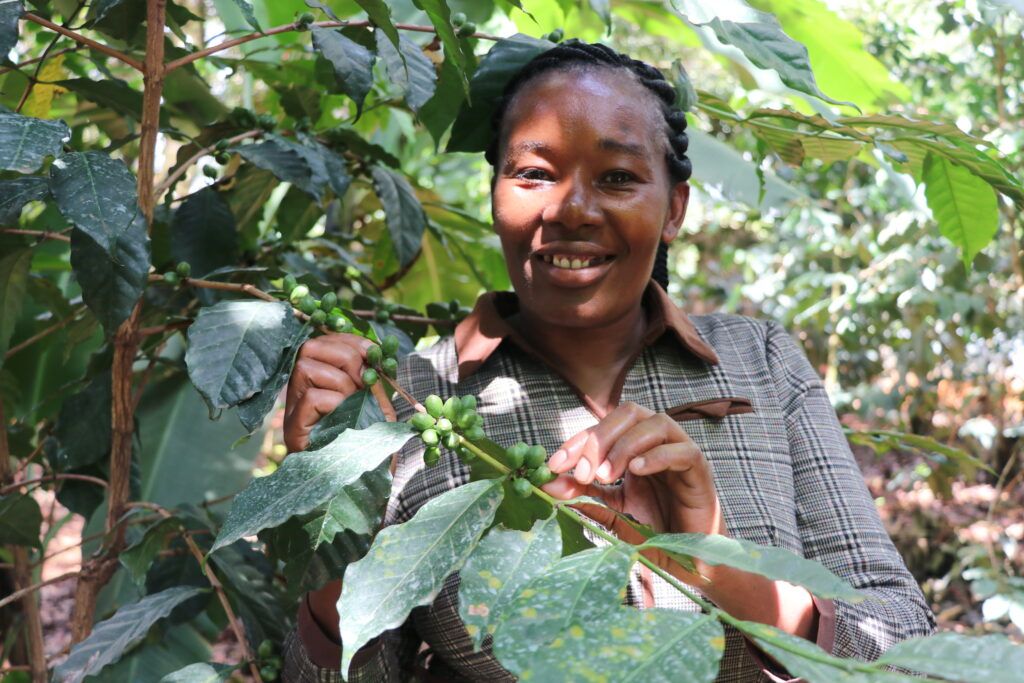
Landscapes & Communities
From the Ground Up: Local Leadership for Global Transformation
Our work on the ground also goes beyond certification, driving regeneration throughout the world’s most biodiverse—and at risk—landscapes. From the soaring canopies of the Amazon to the islands of Indonesia, we have 83 active landscape and community (L&C) programs in five critical regions.
Here we help rural communities build inspiring partnerships with companies, governments, and local NGOs. Together, we tackle complex and interconnected challenges that are simply too big to be taken on alone—from climate change and deforestation to human rights and rural poverty.
Mesoamerica
With its sprawling Selva Maya rainforest and a vibrant mix of Indigenous cultures, this region stands at the forefront of our globally recognized community forestry work. We also partner with farming communities across Costa Rica, Guatemala, Honduras, Mexico, and Nicaragua to drive sustainability across key sectors including bananas and coffee.
130K+
people benefitting from L&C programs
1.5 million
hectares covered by L&C programs
South America
Home to the magnificent Amazon rainforest and many of the world’s leading coffee-producing countries, this part of the globe plays a crucial role in the future of regenerative farming. In Brazil, Colombia, Ecuador, and Peru, we work alongside local farming communities to advance nature-friendly ways of growing coffee, cocoa, flowers, bananas, avocados, and more.
40K+
people benefitting from L&C programs
1+ million
hectares covered by L&C programs
West and Central Africa
The biodiversity-rich landscapes of West and Central Africa are shaped by rural economies nestled among vast forests. Here we work hand in hand with local communities in Cameroon, Côte d’Ivoire, the Democratic Republic of the Congo, and Ghana to restore forests, build sustainable forest-based enterprises, and transform the cocoa sector.
404K+
people benefitting from L&C programs
14.9 million
hectares covered by L&C programs
East and Southern Africa
From vast savannahs to towering, snow-capped peaks, the landscapes of East and Southern Africa are a stunning mosaic of diverse terrains and ecosystems. We work in vulnerable landscapes throughout Ethiopia, Kenya, Malawi, Tanzania, and Uganda to restore balance between coffee and tea farming communities and the precious forests around them.
287K+
people benefitting from L&C programs
482K+
hectares covered by L&C programs
Asia Pacific
The landscapes of Asia Pacific are steeped in breathtaking biodiversity and a rich agricultural heritage. Here we’re helping coffee, tea, and cocoa farmers advance sustainable and regenerative growing practices across India, Indonesia, Sri Lanka, Vietnam, and beyond.
433K+
people benefitting from L&C programs
7+ million
hectares covered by L&C programs
Regenerating Ghana’s Cocoa Heartland
Spanning 382,000 hectares and five forest reserves, Ghana’s Sui River landscape is an ecological and biodiversity hotspot. Its dense forests and winding waterways sustain local communities and a rich array of stunning wildlife.
The landscape is also one of West Africa’s most important cocoa-growing areas—putting its forests under serious pressure from agricultural-driven deforestation. Add climate change to the mix—which is causing changing rainfall patterns, floods, and droughts—and the pressure on people and nature is intensifying.
To restore balance and help farmers adapt, the Rainforest Alliance partners with farmers, community leaders, government officials, cocoa traders, and chocolate manufacturers on three community-led Landscape Management Boards.
In 2024, our work focused on:
- Training farmers in regenerative growing practices, such as planting shade trees, composting, and conserving water.
- Helping communities build sustainable livelihood opportunities, such as vegetable and snail farming, bee keeping, and honey production.
- Planting tree seedlings on cocoa farms, along riverbanks, and in formerly degraded areas.
- Monitoring and geo-tagging of over 30,000 planted native tree species.
- Ensuring farmers have legal ownership of their trees by registering them with the Ghanaian Forestry Commission.
- Strengthening community leadership of landscape governance structures.
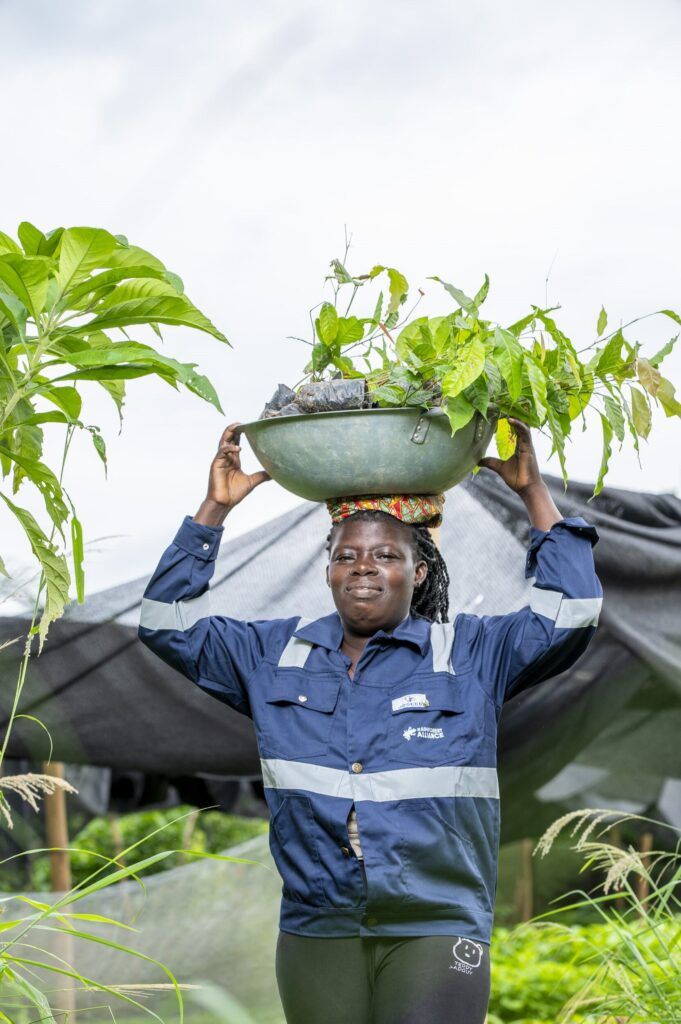
65%
of farmers surveyed* invested in climate change adaptation
*Based on a sample size of 100 farmers.
583K+
tree seedlings planted
54K
trees registered
782
farmers supported to set up side businesses
Highlights from some of our other projects around the globe:
Finances & Funding
Revenue & Support
| 1. Royalty revenue (57.7%) | US$ 63,994,980 |
| 2. Government, foundation, and corporate grants and contracts (25.5%) | 28,265,938 |
| 3. Major donors and individuals (3%) | 3,326,604 |
| 4. Other contract revenue (9.1%) | 10,098,706 |
| 5. In-kind contributions (.80%) | 897,079 |
| 6. Other (3.8%) | 4,253,448 |
| TOTAL REVENUE & SUPPORT | US$ 110,836,755 |
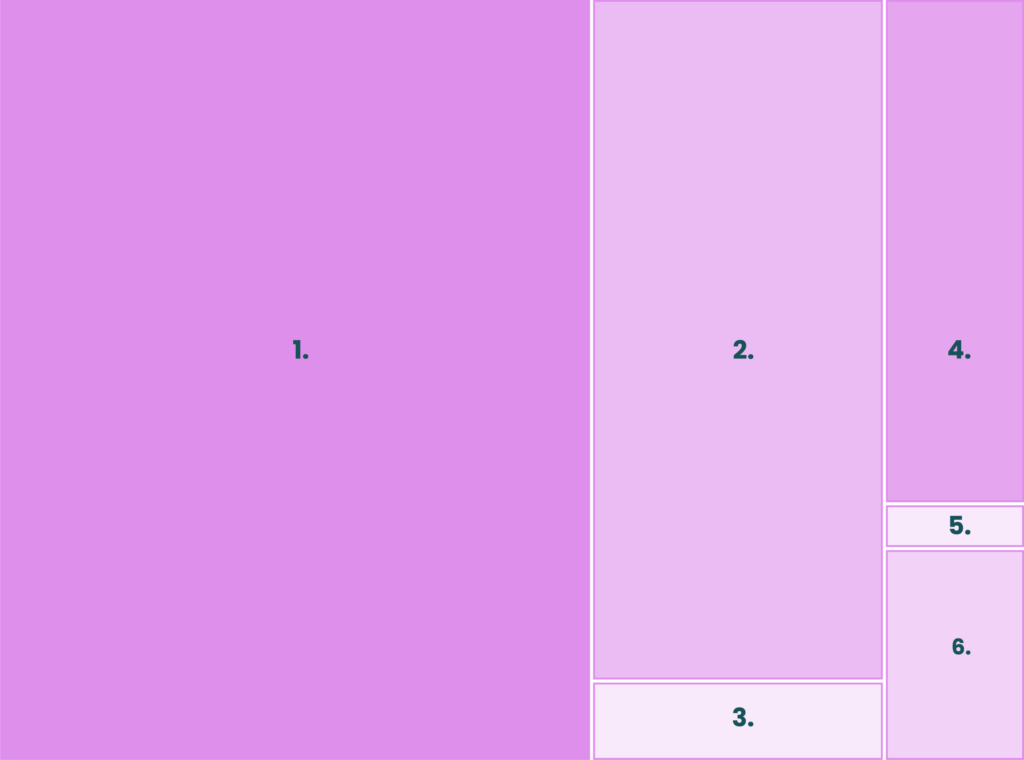
Expenses
| 1. Program services (76%) | US$ 81,068,235 |
| 2. Management and general (20%) | 21,557,580 |
| 3. Fundraising (4%) | 4,061,096 |
| TOTAL EXPENSES | US$ 106,686,911 |

Summary
| TOTAL REVENUE & SUPPORT | US$ 110,836,755 |
| TOTAL EXPENSES | 106,686,911 |
| OTHER ACTIVITY Unrealized Loss of FX Hedging Transactions Foreign Currency Translation | (1,113,137) (2,111) |
| ASSETS Change in Net Assets Net Assets, Beginning of Year | 3,034,596 58,778,558 |
| Net Assets, End of Year | US$ $61,813,154 |
Rainforest Alliance Holding, Inc. is an international non-profit organization, organized on January 1, 2018 in the State of Delaware to serve as the common parent non-profit corporation providing centralized governance and oversight over Rainforest Alliance, Inc. and Stichting Rainforest Alliance. This financial summary represents the consolidated revenue and expenses for 2024 for the organization.
Sources of Income
How is the Rainforest Alliance Funded?
Donors
We want to express our sincerest thanks to the thousands of donors who make our work possible. Your generosity powers our alliance, and we see every day the difference your support makes to people and nature around the world.
Below is a list of donors who signed new contracts with us in 2024, continued to support ongoing projects, and contributed over US$1,000 to further our work.
Would you like to see your name on this list next year? Donate today.
7,196
individual donors
28
institutional donors
Acknowledgements
Board of Directors
Daniel R. Katz, Chair • Nalin Miglani, Treasurer • Tasso Azevedo • Sonila Cook • Sarah-Jane Danchie • Wendy Gordon • Nina Haase • Marilú Hernández de Bosoms • Dan Houser • Peter H. Lehner • Berry Marttin • Jon McCormack • Vanusia Nogueira • Juan Esteban Orduz • Anurag Priyadarshi • Anisha Rajapakse • Eric B. Rothenberg • Paul Rubacha • Peter M. Schulte • Kerri A. Smith • Annemieke Wijn
Leadership Team
Chief Executive Officer – Santiago Gowland • Chief Operating Officer – Adam Cox • General Counsel – Molly Stark • Chief Product Officer – Ruth Newsome • Chief Development Officer – Gina Wood • Chief Strategy Officer – Franck Sime • Senior Director for East and Southern Africa – Julius Ng’ang’a • Senior Director for West and Central Africa – Nadège Nzoyem • Senior Director for Asia Pacific – Chandra Panjiwibowo
Editors
Gui-Xi Young • Tina Lippstreu • Daria Koreniushkina • Laura Jamison • Michael Gibbons
Writer
Elizabeth Sensky
Designers
Patrick Floyd • Mason Philips • Joost Voets
Web Development
Matt Nerger • Erica Rosset
Project Management
Marta Fiolhais
Contributors
Gabriela Cordon • N’Deye N’Débane Sarr
Creative Direction
Paula Quazi • Michael Gibbons
Photographers
Dòng Truong Kiên | Acorn • Noah Jackson • Istockphoto • Nu Image Communications • Nice and Serious • Marco Vásquez • Mohsin Kazmi • Sergio Izquierdo • Zdeněk Macháček Communication
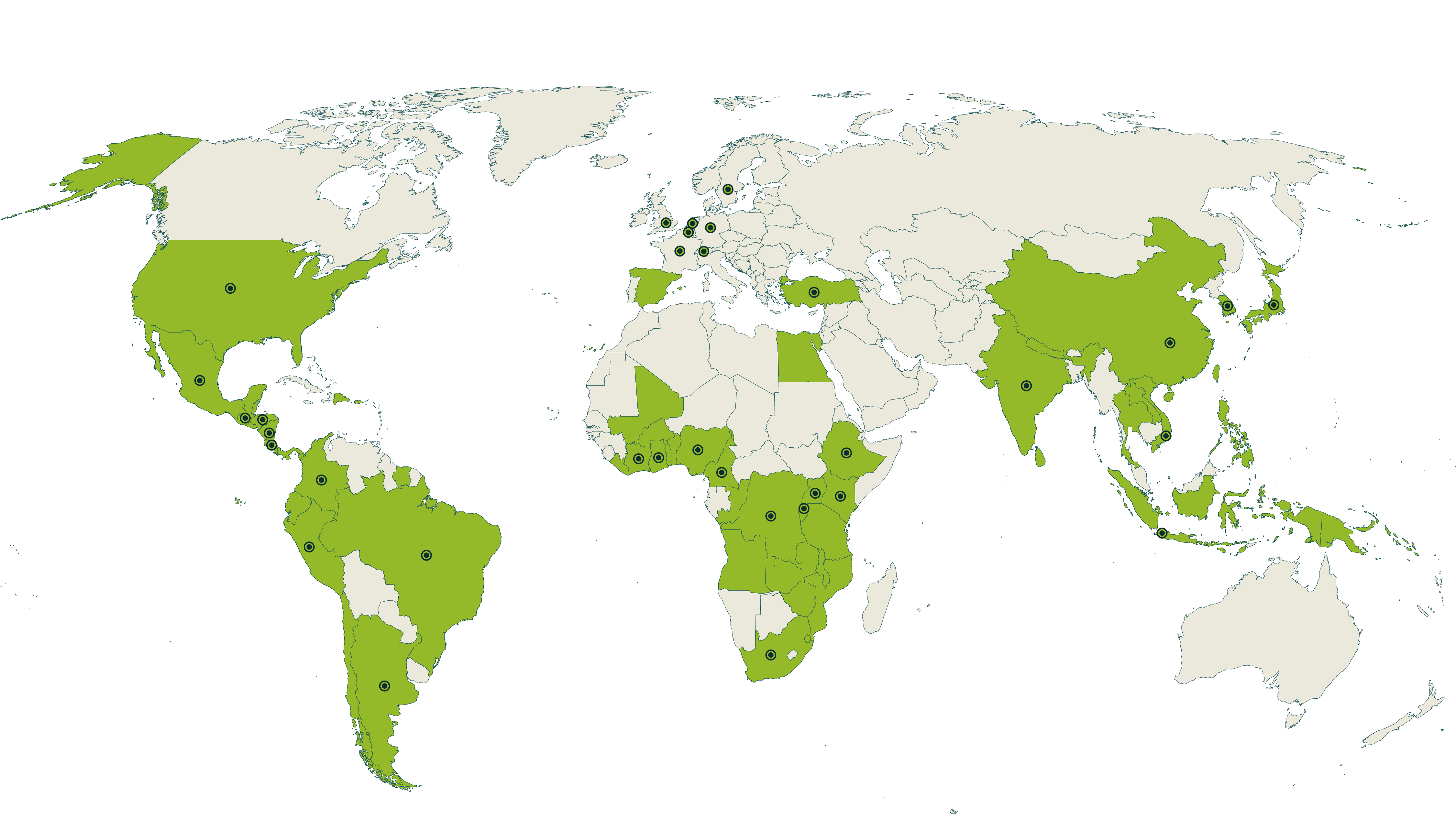
 Rainforest Alliance offices and staff locations
Rainforest Alliance offices and staff locations
